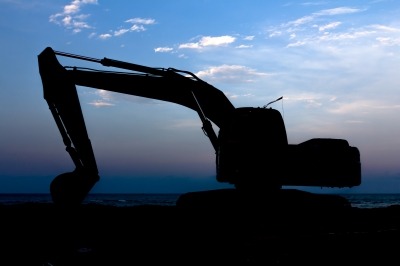Kalium Lakes has announced the completion of the Front-End Engineering and Design (FEED) works for the 100% owned Beyondie Sulphate Of Potash Project (Beyondie SOP Project or BSOPP) in Western Australia.

Image: The FEED optimisation works have been completed by German experts K-UTEC in conjunction with a number of equipment suppliers in Germany. Photo courtesy of Stoonn/FreeDigitalPhotos.net.
The FEED optimisation works have been completed by German experts K-UTEC in conjunction with a number of equipment suppliers in Germany which has continued to build on the previous work completed in the Bankable Feasibility Study (BFS).
Key FEED works and outcomes include:
Recovery Improvement: Overall system potassium recovery improvement from 72% to 91% as a result of de-bottlenecking of the process plant and an increase in the potassium recovery from the flotation tails stream.
Increased Production Rate: As a result of the recovery improvement, production rates have increased by 10% to a 90ktpa SOP Stage 1 facility ramping up to 180ktpa SOP Full Scale Facility.
Initial Mine Life in excess of 30 years (up to 50 years): Mine plans have been updated to reflect the recovery improvement.
Reduction in Pond Size: Total evaporation pond size has reduced from 445 ha to 399 ha.
Less Brine Extraction: Improved recoveries also mean that less brine is required to be extracted from the borefields and trenches, reducing brine extraction and pumping infrastructure.
SOP product quality: Remains the same, at a premium 51-52% K2O product, with negligible chloride and minimal insoluble material.
NAIF Infrastructure Funding: As a result of the recently announced A$74 million NAIF loan package (refer to the ASX Announcement dated 20 February 2019), the base case project now includes installing key infrastructure at the commencement of the project including a gas pipeline and gas fired power station. These items were included in the BFS as an alternative outcome with capital and operating costs highlighted
Decreased Life of Mine (LOM) Operating Cost: As a result of Kalium Lakes owning and operating the power station and gas pipeline (in place of trucked LNG bullets and third party operated power station), plus savings associated with recovery improvements, LOM Operating costs have decreased significantly to ~US$178-207/t FOB AISC (previously ~US$226-263/t).
Kalium Lakes to become the 2nd or 3rd lowest cost producer in the world.
Pre-production Capital Cost of ~A$216M: Capital costs are reduced through less brine extraction infrastructure and condensed pond size. Capital costs increase as a result of the nett additional NAIF-funded infrastructure ($39M), a slightly augmented back end of the process plant to boost production rate and a larger 15.6% contingency (now $29M, previously $15M) to enhance certainty of delivering to budget.
Material Contracts Advanced:The Company’s contracting strategy has been endorsed by proposed funding groups and independent reviewers. Key material contracts including process design and equipment supply; EPC/M, power station, gas supply and product haulage contracts are materially advanced which continue to confirm the BFS/FEED capital and operating cost outcomes.
Capital Cost estimate meets AACE Class 2: The FEED capital cost estimate complies with the AACE International® guidelines for developing a Class 2 estimate.
Independent Technical Reviews: Independent technical reviews initiated by the banks have been completed confirming both the BFS and FEED outcomes.
No change to Ore Reserves or Mineral Resources.
Improved Financial Outcomes:
- Pre-tax NPV8 A$606M, IRR of 20.3% (previously A$575M and 20.4%).
- o Average EBITDA of A$126Mpa, EBITDA margin of 61% (previously A$116Mpa and 61%).
- No changes have been made to the material assumptions utilised in the financial model, other than as detailed in this announcement.
Low Cost Financing Identified: NAIF, German Government Export Credit Agency (ECA) Scheme (Euler Hermes).
Managing Director, Brett Hazelden, commented: “The completion of FEED works continues to confirm and improve on our Bankable Feasibility Study released in September last year. The works incorporate feedback from independent reviewers, financial institutions, our technical team as well as our material construction and operation contractors.
“The significant reduction in operating costs means that Kalium Lakes is likely to become one of the lowest cost producers in the world. Ensuring we can operate profitably, throughout the normal commodity pricing cycles, continues to be a key focus for the Company.
“The opportunity to install and own the power station and gas pipeline infrastructure, not only provides for significantly lower operating costs but also provides essential infrastructure for SOP production expansion and future magnesium by-product delivery,” Mr Hazelden said.
Source: Company Press Release
